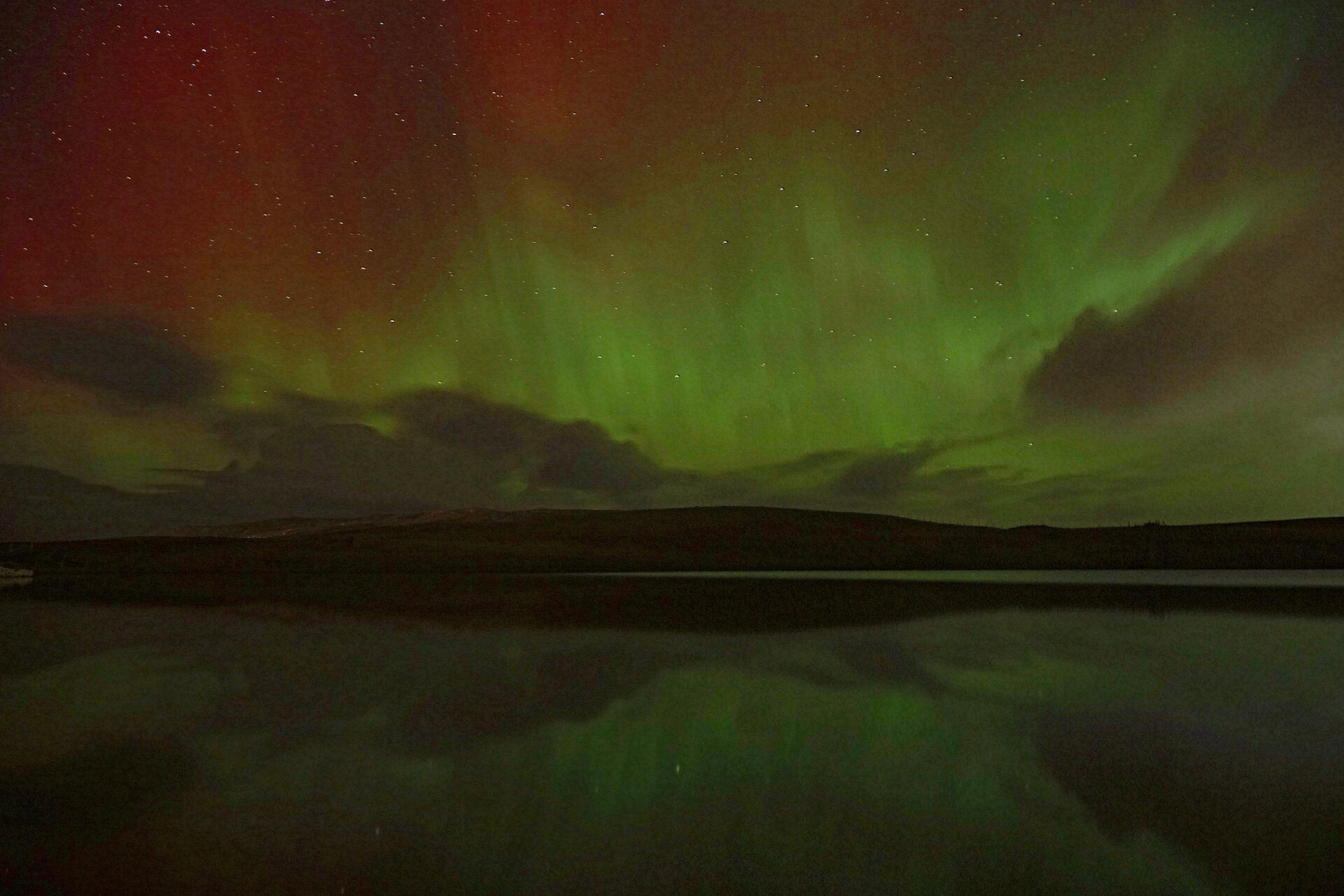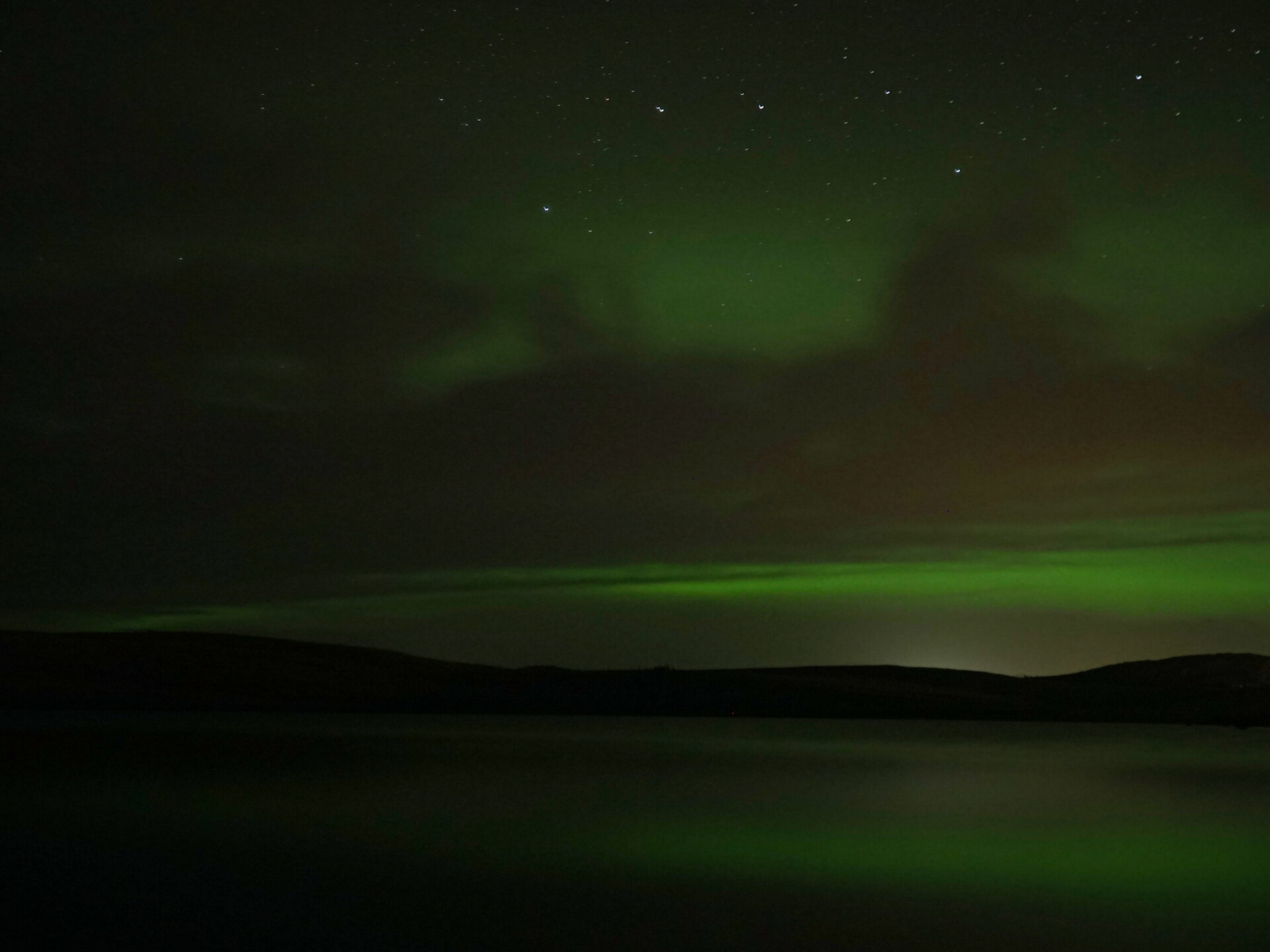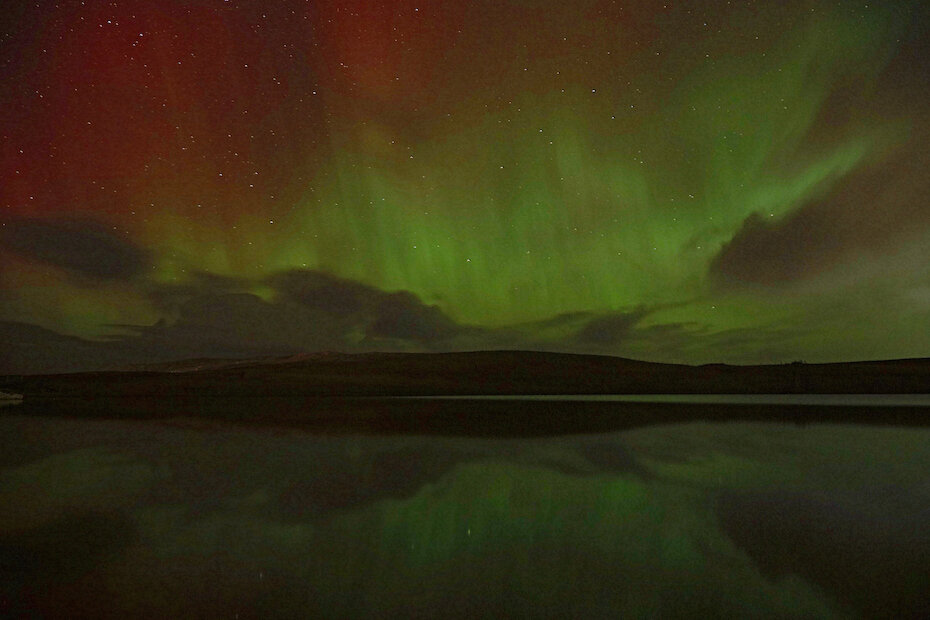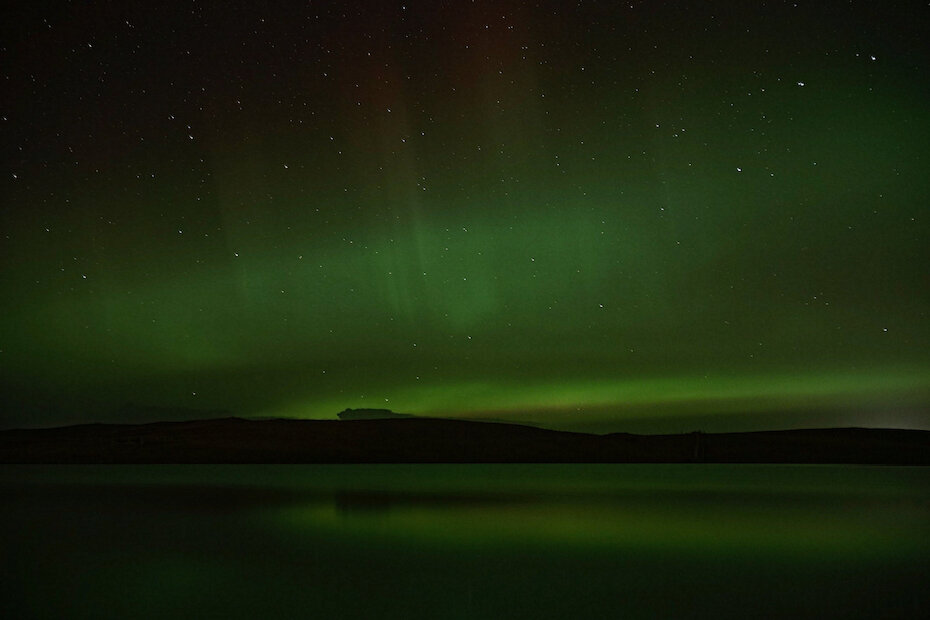It was around 8pm when I realized I had forgotten to bring in the laundry from the line. I reluctantly went out to retrieve it when I noticed silvery rays of light stretching high into the night sky.
I rushed inside to tell the children. My youngest boy was asleep already but his older brother, Rohan, was awake and eager to see. By the time Rohan was wrapped up in jacket, hat and wellies, the lights had faded to a silvery-green shimmer suspended above the horizon.



